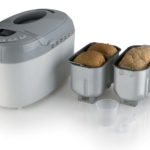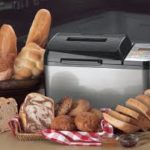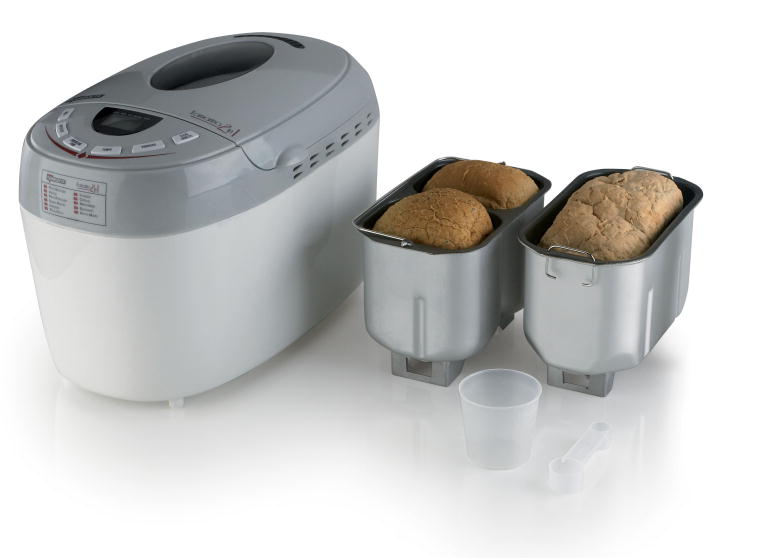How to use a bread maker
More than 30 years have passed since the first bread maker appeared in the home kitchen. Many housewives have managed to appreciate the advantages of this device. There are no problems with use when you have instructions for use on hand. What should you do if you bought a bread machine secondhand, or inherited it (as a gift) without instructions for use? Or was it lost? There is no need to hide such a practical and convenient household appliance on a shelf. You can handle a bread maker without a manual printed on paper, the main thing is not to be afraid and approach the matter thoroughly.
The content of the article
Using a bread machine at home
Today there are an innumerable number of models of electric bread makers. But their design and production algorithm are not much different. Therefore, the algorithm for studying an “unknown” household device will look the same.
Getting to know the model
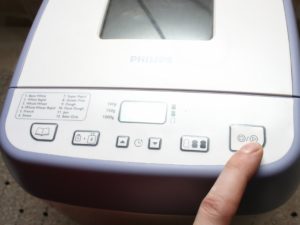 The first step is to visually examine the device. Any bread machine consists of three main elements:
The first step is to visually examine the device. Any bread machine consists of three main elements:
- Housing with cover and control panel;
- Form for baking;
- Removable spatula for mixing.
Make sure all parts are present and undamaged. The mold and spatula are removable parts.The spatula, as a rule, is simply placed on the shaft located at the bottom of the baking bowl. The mold can be removed/inserted into the body in different ways, so it's worth trying it out first. You may have to turn it, or disconnect the clamps, or simply pull it with some force.
Determining bowl volume
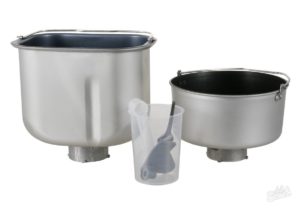 The volume of the mold will determine how many products can be loaded into the bread machine, and what mass the bread will be:
The volume of the mold will determine how many products can be loaded into the bread machine, and what mass the bread will be:
- With a bowl capacity of 3 liters of water, you will get a loaf weighing up to 0.9 kg;
- With a volume of 2.5 liters. - 0.5-0.7 kg;
- If the capacity of the mold is less than 2.5 liters, then the bread will weigh up to half a kilogram.
Finding out the volume of a baking bucket is quite simple. It is necessary to take a vessel of known volume (jar, glass, measuring container) and fill it with water. Pour the liquid into the bowl and repeat the procedure until the mold is completely filled. In this case, it is necessary to calculate the amount of water poured.
Important! In the future, when choosing a baking recipe, you will need to focus on the volume of the bowl. Exceeding the capacity may damage the bread machine.
Exploring settings and controls
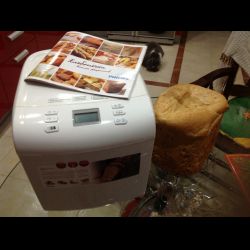 The next step is to become familiar with the controls. Modern models, in addition to a set of buttons, will most likely have a display that reflects the choice of program and the progress of its execution. And on older models, control will be carried out by standard functions: Start/Stop, Menu, Crust color (not always present), Timer. Using the Menu button, you select the working program according to which the cooking will take place. Their quantity will depend on the specific model (Bread, Main, Special, French, Quick, Dough, Cake, etc.). Using the Timer function, you can set the start time for turning on the bread maker.So, having loaded the ingredients in the evening, you can get a loaf of hot bread right for breakfast. The timer is set after selecting the work program.
The next step is to become familiar with the controls. Modern models, in addition to a set of buttons, will most likely have a display that reflects the choice of program and the progress of its execution. And on older models, control will be carried out by standard functions: Start/Stop, Menu, Crust color (not always present), Timer. Using the Menu button, you select the working program according to which the cooking will take place. Their quantity will depend on the specific model (Bread, Main, Special, French, Quick, Dough, Cake, etc.). Using the Timer function, you can set the start time for turning on the bread maker.So, having loaded the ingredients in the evening, you can get a loaf of hot bread right for breakfast. The timer is set after selecting the work program.
Preparing Ingredients
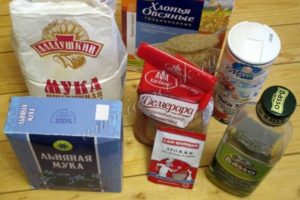
To bake regular bread you will need:
- Yeast - Use only dry yeast that is labeled “Instant” on the packaging. For 0.5 kg of flour take 2 teaspoons;
- Flour is the main ingredient on which the quality of the final product largely depends. The best type for a bread machine is a baking variety made from durum wheat and containing a lot of gluten;
- Salt is a necessary component that improves the taste of bread. On average, take 2 teaspoons per 0.5 kg of flour;
- Sugar - gives baked goods softness and participates in yeast fermentation. You can use honey or other sweeteners instead. For regular bread, sugar is taken at the rate of 1.5-2 tablespoons per 0.5 kg of flour. To bake it, naturally, you will need more;
- Fats - use butter, margarine, chicken, pork or vegetable fat. It will prevent baked goods from sticking to the pan, and the aroma and taste will acquire a special shade;
- Liquid - mostly water is used, but milk, yogurt, whey can be used. It is recommended to use about 220 ml of liquid per 0.5 kg of flour.
Important! All ingredients must be fresh and warm (at least room temperature).
Ingredient order
There are two ways to add ingredients. In some models, you first need to put the yeast in the bowl, then pour out the flour and carefully pour the liquid onto it and add the remaining ingredients. The second method is less commonly used, when liquid is poured onto the bottom and then flour is poured in. Yeast and everything else are laid out on it.But no matter what method is used, there is a single rule - the yeast should not come into contact with water. This is especially important for baked goods with a delayed start.
Depending on the recipe, there may be a different order for loading the ingredients into the bread machine.
Procedure
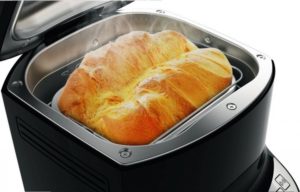 Before putting the components into the mold, you must make sure that it is absolutely clean and the mixing spatula is in its place. Place the filled bowl in its place and close the lid. Select the baking program, the degree of crispiness of the crust and press start (or set the timer). While the kneading process is in progress, the bread machine can be opened, controlling the consistency of the dough. If necessary, you can add flour or liquid. And if the recipe requires the presence of special components (raisins, dried apricots, nuts, etc.), then it is also better to add them while mixing. The machine will signal the end of the dough making stage with a sound signal and the baking process will start. At this time, the lid must not be lifted under any circumstances. The oven will also notify you when the bread is ready with a buzzer. Now you can open it and take out the mold.
Before putting the components into the mold, you must make sure that it is absolutely clean and the mixing spatula is in its place. Place the filled bowl in its place and close the lid. Select the baking program, the degree of crispiness of the crust and press start (or set the timer). While the kneading process is in progress, the bread machine can be opened, controlling the consistency of the dough. If necessary, you can add flour or liquid. And if the recipe requires the presence of special components (raisins, dried apricots, nuts, etc.), then it is also better to add them while mixing. The machine will signal the end of the dough making stage with a sound signal and the baking process will start. At this time, the lid must not be lifted under any circumstances. The oven will also notify you when the bread is ready with a buzzer. Now you can open it and take out the mold.
Important! Follow the safety rules - only remove the bowl using oven mitts, do not lean low over the open bread maker or lean on it. By following these simple rules you can avoid burns.
After turning the bowl over and shaking it lightly, remove the bread. If necessary, you can lightly tap on a wooden board. It is important not to forget to take out the spatula. After cooling, delicious homemade bread is ready to eat. Now all that remains is to tidy up the bread machine - wash it, wipe it dry and put it away until next use. This should only be done when the device has completely cooled down.
Common baking problems and ways to solve them
Most often, housewives complain that the bread does not rise. There may be several reasons for this: stale yeast, incorrect choice of working program, lack of sugar in the mixture. A small amount of oxygen in the flour can also reduce the fluffiness of the dough, so it must be sifted before baking.
It happens that the dough rises well, but then falls and the bread turns out tasteless. This can happen due to the fact that the bread machine was placed in a draft or in a cold room. The dough is too liquid and does not hold its shape. Next time you need to change the recipe and add flour.
If the dough is not baked, it means that the volume of ingredients does not correspond to the capacity of the bowl or the lid of the device was not closed tightly. Too many additional components (especially fat-containing ones - nuts, cream, butter) can also cause a similar problem. Conversely, if there is not enough fat, the bread will turn out too dry.
In custody
A bread maker is a necessary technique and not very difficult to use. What housewife would not want to please her loved ones with freshly baked bread, aromatic pastry or an original cupcake. And everyone can understand the controls, the main thing is desire and a serious attitude.

